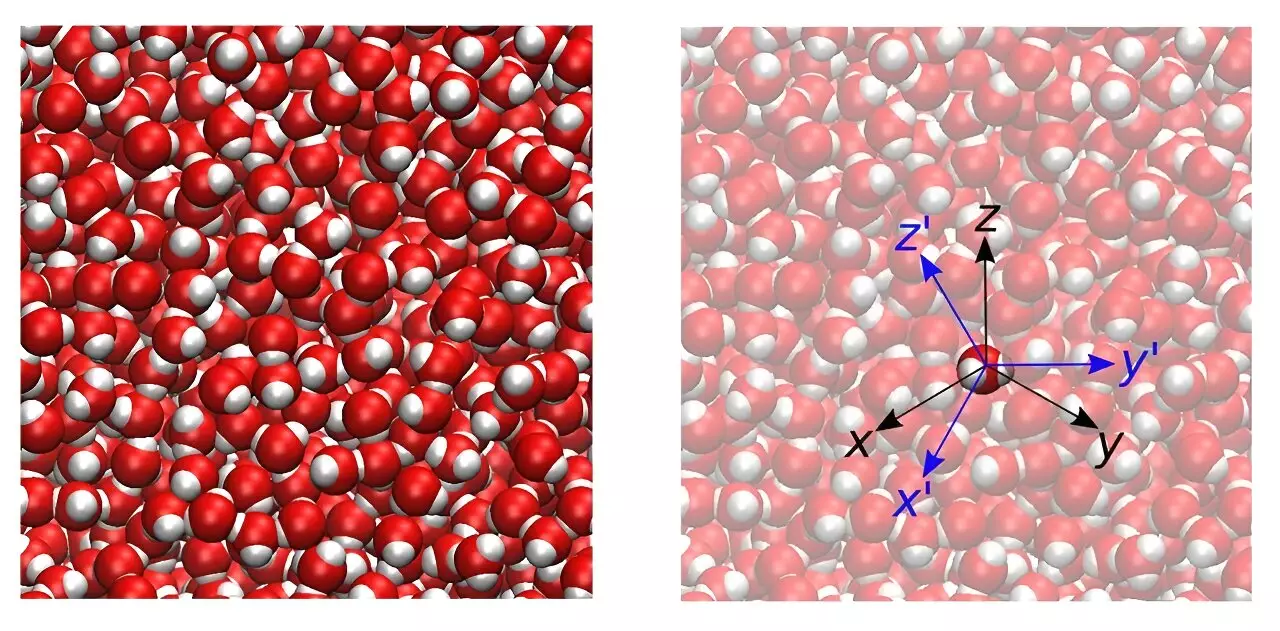For nearly 50 years, computational scientists have utilized a 2-femtosecond time step as the standard when simulating water molecules in molecular dynamics studies. This time step was established based on a paper published in 1977, which proposed a rigid-body description of water to enable the use of longer time steps and reduce computational expenses. The reasoning behind this approach was to decouple the vibrations of the oxygen-hydrogen bond from translation and rotation, allowing for larger time intervals in simulations. However, recent research conducted by the Department of Energy’s Oak Ridge National Laboratory challenges the validity of this long-accepted time step.
According to the study published in the Journal of Chemical Theory and Computation, using a time step greater than 0.5 femtoseconds can introduce errors in the dynamics and thermodynamics of water simulations. The team’s findings suggest that discrepancies in temperatures between translational and rotational motions of water molecules indicate a lack of equilibrium in the simulation. This can lead to inaccurate results and misrepresentation of the actual behavior of water molecules in biological systems. Given that water is a fundamental component of biomolecular simulations, the implications of these findings are significant.
One of the key aspects of statistical mechanics is the concept of equilibrium, where temperatures associated with different types of molecular motion should be equal. The discrepancy in temperatures observed in simulations using time steps longer than 0.5 femtoseconds indicates a violation of this principle. By reevaluating the time step to a more rigorous 0.5-femtosecond interval, researchers can ensure that their simulations align with the fundamental tenets of statistical mechanics, leading to more accurate and reliable results.
The Importance of Accurate Molecular Dynamics Simulations
Molecular dynamics simulations play a crucial role in understanding the behavior of molecules at the atomic level. By accurately modeling the interactions between atoms and molecules, researchers can gain insights into various biological and chemical processes. However, inaccuracies in simulations, such as those arising from improper time step selection, can lead to misleading conclusions and flawed interpretations. Therefore, it is essential for computational scientists to critically assess and refine their simulation protocols to ensure the integrity and validity of their results.
The recent findings presented by the Oak Ridge National Laboratory highlight the importance of revisiting established practices in computational chemistry and molecular dynamics simulations. By going back to the original work and acknowledging the importance of small time steps in achieving equilibrium in simulations, researchers can enhance the accuracy and reliability of their results. While transitioning from a 2-femtosecond to a 0.5-femtosecond time step may require longer computational times, the benefits of improved accuracy and adherence to fundamental principles of statistical mechanics outweigh the potential drawbacks.
As computational power continues to advance, researchers have the opportunity to conduct more sophisticated and precise molecular dynamics simulations. By adopting a more careful and precise approach to simulation protocols, scientists can ensure that their studies yield meaningful and accurate results. The critical analysis of time step selection presented in the study by the Oak Ridge National Laboratory serves as a valuable reminder of the importance of rigor and attention to detail in computational research. As the scientific community embraces these new findings and implements changes to their simulation practices, the field of molecular dynamics research is poised to make significant strides towards a deeper understanding of complex biological systems.


Leave a Reply